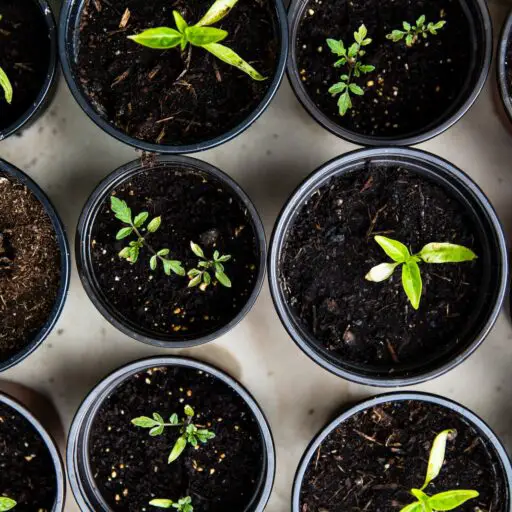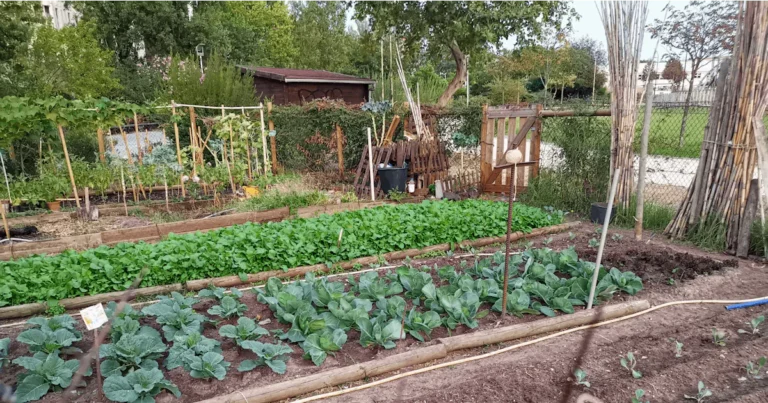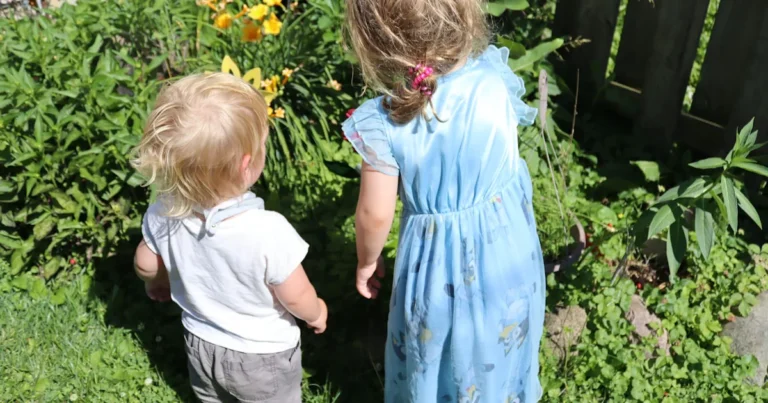Support our educational content for free when you purchase through links on our site. Learn more

Imagine transforming a vacant city lot into a buzzing oasis of fresh veggies, buzzing bees, and neighbors sharing stories over ripe tomatoes. Community gardens are doing just that—and more. Beyond beautifying urban spaces, these green gems are critical players in promoting sustainable living and environmental stewardship. But what exactly makes them so impactful? From slashing food miles to nurturing pollinators, community gardens weave together ecology, education, and social connection in ways that can reshape our cities and lives.
In this article, we’ll uncover 8 powerful roles community gardens play in building greener, healthier communities. Whether you’re a seasoned gardener or a curious city dweller, you’ll discover practical tips, inspiring stories, and innovative tools to help you grow together with your neighbors and the planet. Ready to dig in? Let’s explore how these grassroots gardens are cultivating a sustainable future—one plot at a time.
Key Takeaways
- Community gardens reduce carbon footprints by growing food locally, cutting down on transportation emissions.
- They support biodiversity and pollinators, creating vital urban habitats.
- Composting and water-saving techniques in gardens minimize waste and conserve resources.
- Gardens foster social cohesion and mental well-being by bringing diverse people together.
- They serve as educational hubs, teaching sustainable practices and environmental awareness.
- Urban planners increasingly recognize gardens as essential green infrastructure for sustainable cities.
- Innovative tools like smart irrigation systems and compost tumblers make sustainable gardening easier and more efficient.
- Overcoming challenges like land access and funding requires community collaboration and advocacy.
Ready to start your sustainable garden journey? Check out composting tools and rainwater harvesting gear here:
- Envirocycle Compost Tumblers on Amazon | Good Ideas Rain Barrels on Walmart | Orbit Drip Irrigation Kits on Amazon
Table of Contents
- Quick Tips and Facts 🌱
- The Roots of Community Gardens: History and Evolution of Urban Green Spaces 🌿
- 1. How Community Gardens Foster Sustainable Living 🌎
- 2. Environmental Stewardship Through Local Food Production 🍅
- 3. Community Gardens as Hubs for Biodiversity and Pollinator Support 🐝
- 4. Waste Reduction and Composting Practices in Community Gardens ♻️
- 5. Water Conservation Techniques and Rainwater Harvesting in Gardens 💧
- 6. Social Impact: Building Stronger Communities Through Gardening 🤝
- 7. Educational Opportunities: Teaching Sustainability and Ecology in Gardens 📚
- 8. Urban Planning and Policy: Integrating Community Gardens into Sustainable Cities 🏙️
- Innovations in Community Gardening: Tech, Tools, and Trends for a Greener Tomorrow 🚀
- Overcoming Challenges: Common Obstacles and How Community Gardens Thrive 💪
- Success Stories: Inspiring Community Garden Projects Around the World 🌍
- Quick Tips for Starting and Maintaining Your Own Community Garden 🌻
- Conclusion: Cultivating a Sustainable Future Together 🌟
- Recommended Links for Community Gardening and Sustainability 🌐
- Reference Links and Further Reading 📖
Quick Tips and Facts 🌱
Welcome to the green heart of sustainable living! At Community Gardening™, we’ve seen firsthand how community gardens are powerhouses of environmental stewardship and sustainability. Here’s a quick cheat sheet to get you started:
- ✅ Community gardens reduce food miles by growing fresh produce locally, slashing carbon emissions from transportation.
- ✅ Composting organic waste in gardens cuts landfill contributions and enriches soil naturally.
- ✅ Native plants and pollinator-friendly flowers boost urban biodiversity and support bees, butterflies, and birds.
- ✅ Water-saving techniques like drip irrigation and rainwater harvesting conserve precious resources.
- ✅ Social cohesion blooms alongside veggies—gardens build community ties and promote mental well-being.
- ✅ Educational hubs teach sustainable practices, from organic gardening to waste reduction.
Want to dive deeper? Check out our article on What is the purpose of a community garden? for more insights.
The Roots of Community Gardens: History and Evolution of Urban Green Spaces 🌿
Community gardens aren’t just pretty patches of green—they’re living legacies of urban resilience and sustainability. Their roots trace back to ancient civilizations, but modern urban community gardens blossomed during the World Wars as “Victory Gardens,” helping cities feed themselves amid scarcity.
A Brief Timeline of Community Gardens:
- Early 1900s: Urban reformers promoted gardens to improve public health and beautify cities.
- WWI & WWII: Victory Gardens surged, growing food locally to support war efforts.
- 1970s: Environmental movement sparked renewed interest in urban agriculture and green spaces.
- Today: Community gardens are vital tools for climate action, social equity, and urban biodiversity.
These gardens transform vacant lots into thriving ecosystems and social hubs. They’re a grassroots response to urban challenges like food deserts, pollution, and social isolation.
For more on how gardens fit into urban planning, see our Community Garden Policies category.
1. How Community Gardens Foster Sustainable Living 🌎
Community gardens are living classrooms and sustainability champions rolled into one. Here’s how they nurture sustainable lifestyles:
Growing Your Own Food = Lower Carbon Footprint
By growing fruits and veggies locally, you cut down on fossil fuels used in food transport. According to the EPA, food transportation accounts for about 11% of total food system emissions. Community gardens help slash this number by keeping food close to home.
Organic Practices Mean Healthier Soil and Food
Most community gardens embrace organic growing methods, avoiding synthetic pesticides and fertilizers. This protects soil health and prevents chemical runoff into waterways.
Sharing Resources and Knowledge
Community gardens encourage sharing tools, seeds, and expertise, reducing waste and promoting sustainable consumption habits.
Step-by-Step: Starting Sustainable Practices in Your Garden
- Choose native and drought-tolerant plants to reduce water needs.
- Start a compost bin to recycle kitchen scraps and garden waste.
- Use rain barrels to collect water for irrigation.
- Practice crop rotation and companion planting to maintain soil fertility naturally.
- Engage the community through workshops and volunteer days.
Want more sustainable gardening hacks? Visit our Garden Maintenance Tips section.
2. Environmental Stewardship Through Local Food Production 🍅
Growing food locally isn’t just convenient—it’s an act of environmental stewardship that benefits the planet and people alike.
Benefits of Local Food Production:
- Reduces greenhouse gas emissions: Less trucking means less pollution.
- Minimizes packaging waste: Fresh produce from community gardens often skips plastic packaging.
- Supports pollinators: Gardens with diverse crops provide habitats for bees and butterflies.
- Improves soil health: Organic practices build soil carbon and prevent erosion.
Real-World Impact:
A study by the American Community Gardening Association found that urban gardens can reduce food miles by up to 90%, dramatically shrinking the carbon footprint of produce.
Community Gardening™ Tip:
Try growing heirloom tomatoes, kale, and herbs—they’re easy, nutritious, and loved by pollinators!
3. Community Gardens as Hubs for Biodiversity and Pollinator Support 🐝
Did you know community gardens can be urban wildlife sanctuaries? They provide essential habitat for pollinators and other beneficial creatures.
Why Biodiversity Matters:
- Pollinators like bees and butterflies are crucial for food production—about 75% of global crops depend on them.
- Diverse plantings support a wider range of insects and birds, creating a balanced ecosystem.
- Native plants in gardens help preserve local flora and fauna.
How to Boost Biodiversity in Your Garden:
- Plant native wildflowers and flowering shrubs.
- Create habitats like bee hotels and butterfly puddling stations.
- Avoid pesticides and herbicides that harm beneficial insects.
- Incorporate companion planting to naturally deter pests.
Anecdote from Our Gardeners:
One of our community gardens in Chicago transformed a barren lot into a buzzing pollinator paradise within two seasons, attracting monarch butterflies and native bees!
Explore more on planting for pollinators in our Garden Design Ideas category.
4. Waste Reduction and Composting Practices in Community Gardens ♻️
Composting is the unsung hero of sustainable gardening. It turns food scraps and garden waste into black gold—nutrient-rich compost that feeds plants and reduces landfill waste.
Composting Benefits:
- Diverts organic waste from landfills, reducing methane emissions.
- Improves soil structure, water retention, and fertility.
- Reduces the need for chemical fertilizers.
How to Start Composting in a Community Garden:
- Designate a compost area with bins or piles.
- Collect green waste (vegetable scraps, grass clippings) and brown waste (leaves, paper).
- Balance carbon and nitrogen by mixing greens and browns.
- Turn the pile regularly to aerate and speed decomposition.
- Use finished compost to enrich beds and containers.
Tools We Recommend:
- Envirocycle Compost Tumbler: Easy to use and speeds up composting.
- Yimby Compost Bin: Affordable and perfect for small spaces.
👉 Shop composting tools on:
5. Water Conservation Techniques and Rainwater Harvesting in Gardens 💧
Water is precious, and community gardens are leading the charge in water-wise gardening.
Top Water-Saving Strategies:
- Drip irrigation systems deliver water directly to roots, minimizing evaporation.
- Mulching retains soil moisture and suppresses weeds.
- Rainwater harvesting collects and stores rain for irrigation.
- Choosing drought-tolerant plants reduces overall water needs.
Rainwater Harvesting 101:
- Install gutters and downspouts directing water into barrels or cisterns.
- Use screens to keep debris and mosquitoes out.
- Connect barrels to drip irrigation or watering cans.
Our Favorite Products:
- Good Ideas Rain Wizard Rain Barrel: Durable and easy to install.
- Orbit Drip Irrigation Kit: Customizable and water-efficient.
👉 CHECK PRICE on:
6. Social Impact: Building Stronger Communities Through Gardening 🤝
Community gardens are much more than plants—they’re social glue that binds neighborhoods together.
How Gardens Build Community:
- Provide a shared space for people of all ages and backgrounds to connect.
- Foster intercultural exchange through shared gardening traditions.
- Offer volunteering and leadership opportunities, empowering residents.
- Improve mental health and reduce stress through nature contact and physical activity.
Real Talk from Our Gardeners:
One garden member told us, “I met my best friends here, learned to grow my own food, and found a sense of belonging I never had before.”
Want to get involved? Check out our Community Garden Events for local meetups and workshops.
7. Educational Opportunities: Teaching Sustainability and Ecology in Gardens 📚
Community gardens are outdoor classrooms where people learn about ecology, nutrition, and sustainability hands-on.
Popular Educational Programs:
- Workshops on organic gardening, composting, and seed saving.
- Classes on pollinator biology and native plants.
- Youth programs teaching healthy eating and environmental stewardship.
- Demonstrations of water conservation and soil health techniques.
Why Education Matters:
Educating gardeners and visitors spreads sustainable habits beyond the garden, creating ripple effects in the wider community.
Pro Tip:
Partner with local schools and nonprofits to expand educational reach and resources.
Explore more ideas in our Benefits of Community Gardens section.
8. Urban Planning and Policy: Integrating Community Gardens into Sustainable Cities 🏙️
Community gardens are key players in sustainable urban development. They help cities meet environmental goals and improve quality of life.
Policy Highlights:
- Zoning laws that allow or encourage community gardens.
- Grants and funding programs supporting garden creation and maintenance.
- Partnerships between municipalities and community groups.
- Inclusion of gardens in green infrastructure plans to reduce urban heat islands.
Case Study:
New York City’s GreenThumb program supports over 600 community gardens, providing resources and legal protections.
How You Can Advocate:
- Attend city council meetings to support garden-friendly policies.
- Collaborate with local planners and environmental groups.
- Share success stories to build public support.
For policy insights, visit our Community Garden Policies category.
Innovations in Community Gardening: Tech, Tools, and Trends for a Greener Tomorrow 🚀
The future of community gardening is bright—and tech-savvy! From smart irrigation to vertical gardens, innovation is making sustainable gardening easier and more efficient.
Cool Innovations to Watch:
- Smart sensors that monitor soil moisture and send alerts to your phone.
- Vertical and container gardening maximizing space in urban areas.
- Solar-powered garden lights and water pumps reducing energy use.
- Seed libraries and digital platforms for sharing seeds and knowledge.
Our Favorite Tools:
- Parrot Flower Power Sensor: Tracks plant health and watering needs.
- Click and Grow Smart Garden: Automated indoor garden for fresh herbs year-round.
👉 Shop smart gardening tech on:
Overcoming Challenges: Common Obstacles and How Community Gardens Thrive 💪
Community gardens face hurdles like land tenure insecurity, funding shortages, and vandalism—but they persevere!
Common Challenges:
- Securing long-term land access in rapidly developing cities.
- Funding for tools, soil amendments, and infrastructure.
- Volunteer burnout and leadership turnover.
- Pest management without chemicals.
How Gardens Overcome:
- Forming nonprofits or cooperatives to gain legal standing.
- Hosting fundraisers and applying for grants (e.g., from the USDA or local governments).
- Building strong community networks to share responsibilities.
- Using integrated pest management and natural deterrents.
Community Gardening™ Story:
One garden in Detroit survived a proposed redevelopment by rallying neighbors, documenting benefits, and partnering with city officials to secure a permanent lease.
For practical advice, visit our Garden Maintenance Tips page.
Success Stories: Inspiring Community Garden Projects Around the World 🌍
Nothing inspires like success! Here are a few shining examples of community gardens making waves globally:
| Garden Name | Location | Highlights |
|---|---|---|
| Incredible Edible | Todmorden, UK | Transformed public spaces into edible landscapes, boosting local food security and community pride. |
| The Battery Urban Farm | New York City, USA | Combines education, food production, and social programs in a historic park. |
| La Via Campesina Gardens | Mexico City, Mexico | Promotes indigenous crops and sustainable farming techniques. |
| Kibera Community Garden | Nairobi, Kenya | Provides food and income for urban slum residents. |
These projects show how community gardens can be catalysts for environmental, social, and economic change.
Want to start your own success story? Explore our Garden Design Ideas for inspiration.
Quick Tips for Starting and Maintaining Your Own Community Garden 🌻
Ready to roll up your sleeves? Here’s our step-by-step guide to launching a thriving community garden:
Step 1: Gather Your Tribe
- Find passionate neighbors and local organizations.
- Hold a kickoff meeting to share visions and goals.
Step 2: Secure a Site
- Identify vacant lots, parks, or schoolyards.
- Check zoning and get permissions.
Step 3: Plan Your Garden
- Design beds, paths, and communal areas.
- Choose crops suited to your climate and community needs.
Step 4: Prepare the Soil
- Test soil for contaminants.
- Amend with compost and organic matter.
Step 5: Build Infrastructure
- Install raised beds, irrigation, and fencing if needed.
- Set up compost bins and tool sheds.
Step 6: Plant and Maintain
- Start seeds or transplant seedlings.
- Schedule watering, weeding, and harvesting shifts.
Step 7: Engage and Educate
- Host workshops, potlucks, and volunteer days.
- Celebrate milestones and share the harvest.
For detailed maintenance advice, check out our Garden Maintenance Tips category.
Conclusion: Cultivating a Sustainable Future Together 🌟
Well, we’ve journeyed through the vibrant world of community gardens—from their rich history to their pivotal role in promoting sustainable living and environmental stewardship. What’s crystal clear? Community gardens are much more than plots of soil; they are dynamic ecosystems, social hubs, and educational powerhouses that nurture both the planet and the people.
By growing food locally, embracing organic practices, conserving water, and fostering biodiversity, community gardens actively reduce environmental footprints. They also build social capital, weaving stronger, more resilient communities through shared purpose and cooperation. Plus, their role in education and urban planning ensures that sustainability isn’t just a buzzword but a lived experience for many.
If you’re inspired to start or support a community garden, remember: success comes from collaboration, thoughtful planning, and a passion for nurturing both nature and neighbors. As we hinted earlier, tools like the Envirocycle Compost Tumbler and Good Ideas Rain Wizard Rain Barrel can make your sustainable gardening journey smoother and more effective.
So, are you ready to grow together and cultivate a greener, more sustainable future? We sure are—let’s get planting! 🌿
Recommended Links for Community Gardening and Sustainability 🌐
Ready to gear up for your garden adventure? Here are some top picks for tools and resources we love:
-
Envirocycle Compost Tumbler:
Amazon | Walmart | Envirocycle Official Website -
Good Ideas Rain Wizard Rain Barrel:
Amazon | Walmart | Good Ideas Official Website -
Click and Grow Smart Garden:
Amazon | Click and Grow Official Website
Recommended Books for Deepening Your Green Thumb 📚
- The Community Gardening Handbook by Ben Raskin — A practical guide packed with tips on starting and sustaining community gardens.
- Gaia’s Garden: A Guide to Home-Scale Permaculture by Toby Hemenway — Learn how to design sustainable, resilient gardens that work with nature.
- Bringing Nature Home by Douglas Tallamy — Discover the importance of native plants for biodiversity and ecosystem health.
Frequently Asked Questions (FAQ)
How can community gardens contribute to reducing urban pollution and promoting biodiversity in local ecosystems?
Community gardens act as green lungs in urban areas, filtering air pollutants and capturing dust particles. Plants absorb carbon dioxide and release oxygen, improving air quality. Gardens also reduce stormwater runoff by increasing soil permeability, which helps prevent pollutants from entering waterways. By planting diverse native species and pollinator-friendly plants, community gardens create habitats for bees, butterflies, birds, and beneficial insects, boosting urban biodiversity and strengthening local ecosystems.
What are the social benefits of community gardening, and how can they foster a sense of community and cooperation among participants?
Community gardens are vibrant social spaces that bring people together across age, culture, and socioeconomic lines. They foster cooperation through shared responsibilities like planting, watering, and harvesting. This collaborative effort builds trust and friendships, reduces social isolation, and promotes inclusivity. Gardens often host events, workshops, and potlucks that deepen community bonds. Participants report improved mental health, a sense of belonging, and empowerment from contributing to a shared goal.
In what ways can community gardens serve as educational hubs for teaching sustainable gardening practices and environmental awareness?
Community gardens provide hands-on learning environments where people of all ages can explore sustainable practices such as composting, organic pest control, water conservation, and seed saving. They often partner with schools and nonprofits to offer workshops and youth programs that teach ecology, nutrition, and climate resilience. This experiential education helps spread environmental awareness beyond the garden, encouraging sustainable behaviors in homes and neighborhoods.
Can community gardens play a role in addressing food insecurity and promoting food sovereignty, particularly in underserved or low-income communities?
Absolutely! Community gardens increase access to fresh, nutritious produce in areas often labeled “food deserts.” By empowering residents to grow their own food, gardens enhance food sovereignty—giving communities control over their food systems. This reduces dependence on expensive or low-quality store-bought produce, improves diets, and can even generate income through surplus sales. Gardens also foster knowledge sharing about culturally relevant crops and traditional growing methods, strengthening community identity and resilience.
How do community gardens influence urban planning and policy toward greener, more sustainable cities?
Community gardens are increasingly recognized in urban planning as critical green infrastructure that mitigates heat islands, manages stormwater, and enhances public health. Progressive cities integrate gardens into zoning laws, provide grants, and support garden networks. These policies encourage equitable access to green spaces and promote environmental justice. By demonstrating tangible benefits, community gardens help shape policies that prioritize sustainability and community well-being.
Reference Links and Further Reading 📖
- American Community Gardening Association: https://communitygarden.org
- EPA Food Transportation and Emissions Facts: https://www.epa.gov/greenvehicles/greenhouse-gas-emissions-typical-passenger-vehicle
- New York City GreenThumb Program: https://greenthumb.nycgovparks.org/news.html?page=4
- Envirocycle Compost Tumbler Official Site: https://envirocycle.com
- Good Ideas Rain Wizard Rain Barrel: https://www.goodideas.com
- Click and Grow Smart Garden: https://www.clickandgrow.com
- National Garden Week: The Vital Role of Garden Clubs in Preserving Community Character and Scenic Conservation: http://www.scenic.org/2024/06/07/national-garden-week-the-vital-role-of-garden-clubs-in-preserving-community-character-and-scenic-conservation/
- Stein Learning Gardens at St. Sabina: https://www.sabinagardens.org
Ready to dig in? Let’s grow together and make our communities greener, healthier, and more sustainable—one garden at a time! 🌻





